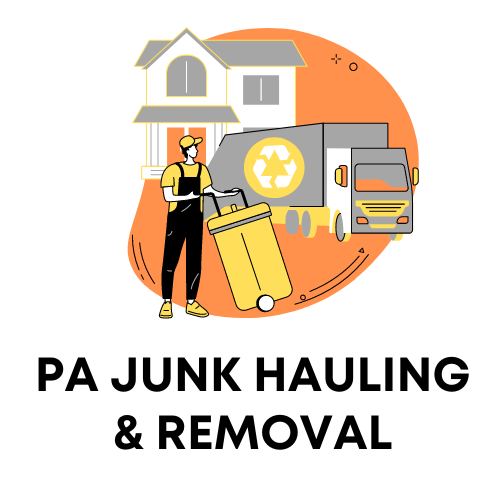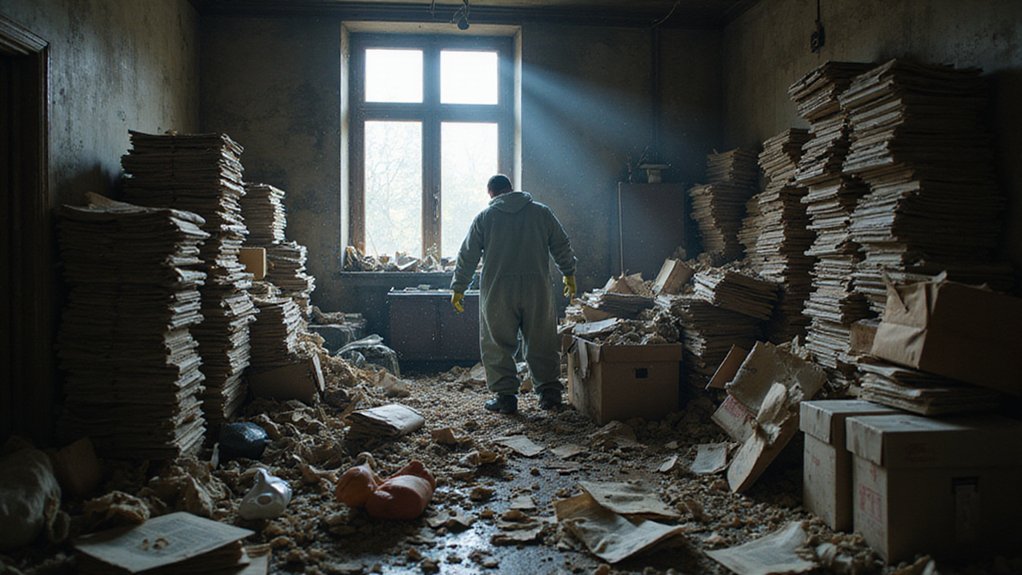When you start a hoarding cleanout, expect a mix of emotions and tough choices. You might feel overwhelmed or attached to items, and that’s okay. This process isn’t just about clearing clutter; it’s about reclaiming your space and peace. Knowing what lies ahead can help ease your concerns. Stick with us to explore practical steps and support for steering this demanding expedition.
Understanding the Emotional Challenges
Countless emotions can surface when you’re facing a hoarding cleanout, and that’s completely normal. You might feel emotional overwhelm as memories flood back with each item you touch. It’s okay to struggle; we’ve all been there in tough moments.
Your personal attachment to things can make letting go feel like losing a piece of yourself. Take it slow, and remember you’re not alone in this. Lean on friends or family for support. Acknowledge each feeling, but don’t let it stop you. You belong to a community that understands, and together, you’ll get through this challenging time. Furniture disposal services can provide professional support during this emotional process, helping you manage the physical and emotional aspects of decluttering.
Assessing the Scope of the Project
Before diving into a hoarding cleanout, you’ve got to assess the scope of the project with a clear mind. We’re in this together, and understanding the task helps ease the stress.
Start by determining hoard size—look at how much space the items cover in your home. Is it one room or the whole house?
Next, focus on evaluating clutter levels. Are things piled high, blocking paths, or just scattered? This step shows you what you’re facing, and it’s okay to feel overwhelmed. Knowing the extent of the mess is your first step toward a clearer, calmer space.
When tackling a hoarding cleanout project, consider hiring professional junk removal services who specialize in compassionate and efficient debris removal.
Planning a Safe Approach
Now that you’ve sized up the hoarding situation, let’s focus on planning a safe approach to the cleanout. Together, we can make this process smoother by pacing the cleanup. Don’t rush; take it step by step to avoid overwhelm. It’s okay to feel frustrated, but slow progress keeps everyone safe.
Next, work on establishing limits with the person involved. Decide what areas to tackle first and set clear rules about what you’ll touch. This respects their feelings and builds trust. Remember, you’re not alone in this—we’re here to support each other through every careful step.
Sorting Through Personal Belongings
Sorting through personal belongings can feel like a formidable task during a hoarding cleanout. You’re not alone in this; we’re here to help you traverse the process.
Start with item categorization, grouping things into keep, donate, or discard piles. This makes decisions easier, even when emotional attachment tugs at your heart. Take your time with each item, acknowledging memories without letting them overwhelm you.
You belong to a community that understands this struggle. Lean on supportive friends or family as you sort. Together, you’ll create a clearer, more comforting space that feels like home again.
Addressing Health and Safety Risks
As you tackle a hoarding cleanout, identifying health and safety risks becomes a critical step in the process. You’re not alone in feeling overwhelmed, but we’re in this together.
Start by ensuring proper ventilation in the space. Open windows to let fresh air in, reducing stuffy or harmful conditions.
Next, watch for dangerous items like old chemicals or spoiled food. Proper hazardous materials disposal is a must, so don’t toss these in regular trash. Use designated services to handle them safely. By taking these steps, you protect yourself and create a safer environment for everyone involved.
Deciding What to Keep or Discard
After tackling the health and safety concerns, you’re ready to face the challenge of deciding what to keep or discard. It’s tough, but you’re not alone in this.
Start by identifying sentimental items that hold deep memories, like old photos or gifts. Keep those close; they connect you to loved ones. Next, focus on determining practical necessities—things you truly need, like clothing or kitchen tools. Let go of extras that clutter your space.
Experts understand it’s hard, but clearing out creates room for peace. Take it slow, and remember, every step brings you closer to a fresh start.
Organizing the Cleaning Process
The next step in a hoarding cleanout is organizing the cleaning process to make it manageable for you. Start by prioritizing tasks, focusing on areas that need urgent attention, like cluttered walkways.
Break the job into smaller, doable parts so you’re not overwhelmed. Next, consider establishing timelines to keep yourself on track. Set realistic goals, maybe clearing one room each week, to feel a sense of progress.
You’re not alone in this; take it step by step with a plan. A clear structure helps ease frustration and builds confidence as you reclaim your space together.
Seeking Professional Support
Why struggle alone when help is just a call away during a hoarding cleanout? You’re not on your own in this tough expedition; a supportive community awaits.
Start by identifying support resources, like local organizations or hotlines, that understand your challenges. They can guide you through the mess with care.
Also, consider connecting with counseling services to talk about your feelings. A counselor can help you cope and feel understood.
You belong to a group that cares, so reach out. With professional support, you’ll find strength and hope to reclaim your space and peace of mind.
Frequently Asked Questions
How Long Does a Hoarding Cleanout Typically Take?
Wondering about the average duration of a hoarding cleanout? You’re not alone. It typically takes days to weeks, depending on the mess. Watch out for hidden health risks as you tackle this together.
What Are the Costs Associated With a Cleanout?
Wondering about the costs of a cleanout? You’ll face estimated expenses based on the job’s size and disposal methods needed. Join our community; we’re here to help you traverse every step together!
Can Family Members Participate in the Cleanout?
You can absolutely join the hoarding cleanout! Your family involvement brings emotional support, strengthening bonds. Plunge in, help sort, and share memories. Together, you’ll create a safer space while staying connected and valued.
How Is Privacy Maintained During the Process?
You’ll see privacy upheld as we manage your space. We’re careful with sensitive information handling, always respecting personal limits. You’re part of our team, and we’ve got your trust covered every step.
What Happens to Donated or Discarded Items?
Wondering about donated or discarded items? You’ll see donated items recycled to help others, nurturing community. Discarded items get disposed of responsibly, ensuring you’re part of a caring, supportive cleanup process together.

